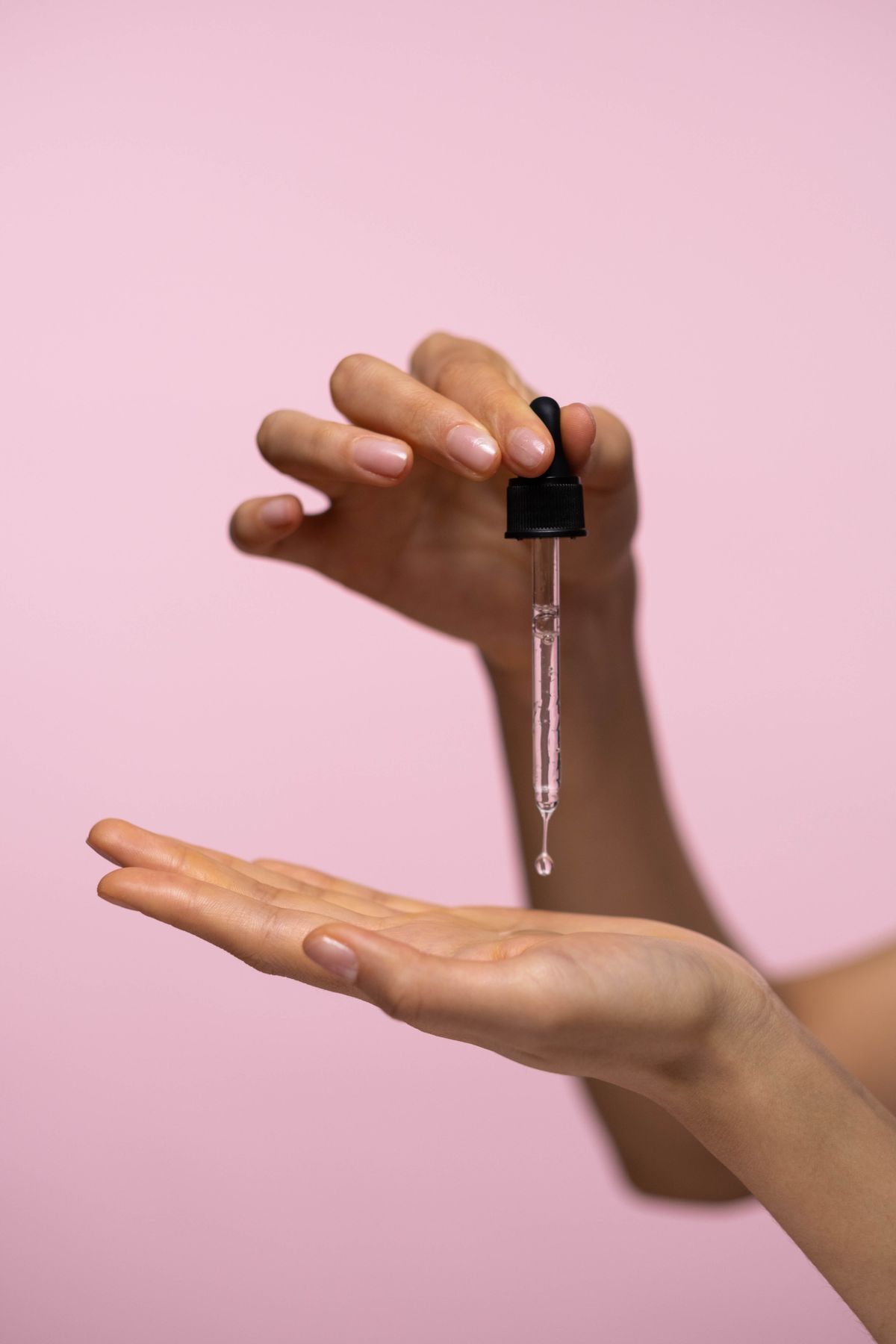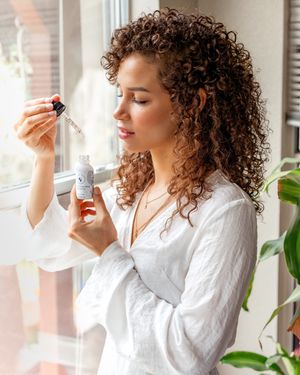Lactic Acid products have been a popular choice in the beauty world for years and continue to gain popularity as new lactic acid treatments become available. The most common lactic acid product is a chemical exfoliant that helps remove dead skin cells from your face. This results in smoother, brighter looking skin with fewer wrinkles and less acne scarring over time without damaging the skin's moisture barrier like many other harsh chemicals can do when used improperly on sensitive facial skin!
It's no secret that as we age, our skin changes. The texture and appearance of the skin becomes less vibrant and youthful over time. But there is a way to keep your face looking young and fresh: lactic acid! Lactic acid has been used for thousands of years to treat various ailments such as acne, scars, wrinkles, and more. This blog post will teach you how to use this beauty tool at home to achieve gorgeous glowing skin.
Let's get to the basics: What is lactic acid?
Lactic acid is an organic alpha hydroxy acid compound derived from milk. It works by gently exfoliating the skin, helping to remove dead cells that cause dullness, and revealing newer more lustrous skin underneath. This alpha hydroxy acids skincare benefit helps you reduce the appearance of fine lines and wrinkles, achieve a brighter complexion with regular use over time as lactic acid will not irritate or dry out your face like other acids such as glycolic, salicylic, or retinol can sometimes do.
It’s different from other acids – such as glycolic – as the molecule of lactic acid is larger and can’t penetrate as deeply. This means you’re getting more of a surface polishing, firming and exfoliating treatment. It’s also good news for those with sensitive skin as it’s likely to be tolerated more easily and it’s less likely than other acids, such as glycolic or salicylic acid, to disrupt skin’s pH barrier.
How to use lactic acid for skincare
Incorporating a lactic acid for skin (like a serum or toner) for two nights per week is a good starting point – then you can apply for three nights in a row and then take a break for three nights. This will mean that you can treat your skin with hydrating ingredients to nourish the new cells.
Over-the-counter alpha hydroxy acids products vary widely in lactic acid concentration, from 5% to over 30% - it’s best not to jump right in with a high percentage as this could cause irritation. Start with a low-strength product to see how your skin reacts first. If it works for your skin, stick with that strength. If you choose to go a level up, monitor your skin for irritation and don’t worry about taking it back down a notch if you need to.
Also, consider discontinuing strong exfoliating products such as retinoid or scrubs when you're regularly using lactic acid (or any acids at all really). Lactic acid promotes new skin growth, which may cause increased susceptibility to sunburn – you should be using at least SPF 30 daily.
Lactic acids come in a range of forms such as:
- Cleansers
- Creams, lotions, and serums
- At-home chemical peels and masks
- Professional lactic acid peel
You can use lactic acid cleansers in the same way as you do as a regular cleanser (avoid your eye area), they’re particularly good for more sensitive skin types.
Creams, lotions, and serums are leave-on treatments that are best used at night to minimize potential sun damage. You’ll still need to use SPF. Scale back if you experience any irritation or discomfort. Leave-on treatments are best for those wanting to use lactic acid long-term, to steadily improve the skin and maintain.
At-home peels and masks are designed to deliver a stronger burst of exfoliation, and they come in higher concentrations than daily use products. You won't use these daily, but rather one to three times per week, or whatever is recommended on the product directions. As with all acids, start slow and work your way up to a higher concentration.
Professional lactic acid peels can be done at your local day spa, medical spa, dermatology, or cosmetic surgery office. Professional peels range generally range in strength from 30 percent up to 88 percent.
In a nutshell, you should be aware of a few points when using lactic acid:
- You should only use lactic acid once a day at most
- It works well with hydrating ingredients such as hyaluronic acid
- It shouldn’t be used with other acids and exfoliants like AHAs or benzoyl peroxide
- You should avoid using retinoids with lactic acid.
Is Lactic Acid safe for Sensitive skin?
You shouldn’t use lactic acid on irritated, broken or red skin as this can irritate your skin further. Using too much of any acid can lead to inflammation, rashes, burns, and accelerated aging. Lactic acid is less irritating than many other acids, and therefore, can be used more often than something like salicylic acid.
Even though lactic acid is gentler than other AHAs like glycolic acid and mandelic acid, it is still a potent treatment. There are some drawbacks to using lactic acid, such as:
- Sun sensitivity – your skin will be more sensitive to the sun after using an acid as it sloughs away skin cells, leaving the new cells more vulnerable to UV damage. You need to protect your skin from the sun, even on days where you haven’t used your lactic acid product - some studies have suggested that it can last as much as four weeks after you’ve stopped using your product.
- Skin irritation – look out for redness, peeling, dryness, burning, itching or swelling. Minor redness, burning and itching can happen when you first apply a lactic acid product – as long as it’s mild and goes away within an hour or so, you should be ok. If it’s moderate to severe or you have swelling then you should wash the product straight off, stop using the product and contact your physician.
- Contraindications – don’t use topical retinoids in conjunction with lactic acid and if you’re under the care of a dermatologist or taking prescribed skincare medication, you should take advice before using lactic acid treatment.
Listen to your skin to discover whether lactic acid works for you, it can be a great and much gentler treatment than other acids which still gives results.
Lactic acid vs. other acids
Lactic Acid vs Glycolic Acid: lactic acid is a better choice for those with sensitive skin as it’s less irritating. Glycolic Acid is a bit stronger in terms of exfoliation, so if lactic acid is not strong enough for you or you don’t see results then glycolic may be a better bet.
Lactic Acid vs Mandelic Acid: Lactic and Mandelic acids both have very similar properties and the same general benefits in helping to reduce the appearance of fine lines and wrinkles and improving skin tone. Mandelic acid is slightly more gentle than lactic acid and has anti-bacterial properties as well.
Lactic Acid vs Salicylic Acid: Lactic acid is less irritating than Salicylic, so it’s a better choice for those with sensitive skin types. Both acids are very similar but Salicylic penetrates a lot deeper into your skin, which is a good thing if you struggle with acne. However, listen to your skin and see which one you handle better.
Side effects of using lactic acid on your skin
Every lactic acid product is different, so check the label to see what’s in it and how much lactic acid there is. Generally speaking, though lactic acids are milder than glycolic or salicylic, but still strong enough that you may experience some side effects like redness and peeling; this should only last a day or two though. If you see any side effects that are more severe then stop using lactic acid and go back to your dermatologist for advice.
Lactic Acid Side Effects: Redness, peeling, dry patches - lactic acid is not for use on irritated skin and will only irritate the problem further. If you see any side effects that are more severe then stop using lactic acid and go back to your dermatologist for advice.
How to use lactic acid in your skincare routine
There are a few things to remember when using lactic acid peels:
-Use lactic acid at night time - it increases sun sensitivity, so use during the day could leave you unprotected from UV rays.
- Remember! Always use sunscreen with broad-spectrum SPF after the use of any acids even if you will be indoors. You need sunscreen on your skin even if lactic acid has been used that morning or evening as lactic acid makes your skin more sensitive to the sun.
-If lactic acid gets in your eyes it will hurt - lactic acid is an alpha hydroxy acid (AHA) and can irritate the skin around your eyes, so always avoid getting lactic or other AHAs near this area. You should also be careful when using lactic solution that you don’t get any lactic acid in your eyes as it will sting.
-Lactic acids are also not good for tattoos as they can fade them or cause other issues. Avoid it around tattoed areas because Lactic acid breaks up the ink.
-Avoid using Lactic Acid or any alpha hydroxy acids peel with Retinols. These ingredients can make the skin more sensitive and you might irritate your skin.
Natural DIY Lactic Acid Peels
If you are interested in all-natural DIY homemade recipes for lactic acid peels, we gotchya! Since Lactic Acid is present in dairy products it is very easy to whip up a DIY concoction that is going to be very effective.
Lactic Acid Turmeric Glow Mask
Ingredients: Turmeric, plain yogurt, honey
In a small bowl combine a pinch of turmeric, a tablespoon of plain yogurt (any type will do), and a half teaspoon of raw honey. Mix well until you get an even smooth paste
How-to: Apply the mask to clean and dry skin, let it sit for about 20 minutes, and rinse with lukewarm or cold water. Apply moisturizer as usual.
Note: Turmeric can stain your skin, so this mask is better done at night as any turmeric staining usually disappears by the morning. For more Turmeric Mask recipes read this Article.
At-home chemical peel
Ingredients: Cane sugar, sour cream (or yogurt)
This mask combines both acids: Glycolic and Lactic. Glycolic acid is naturally present in cane sugar and can be used topically for skincare benefits.
Mix can sugar and sour cream or any plain yogurt into a smooth mixture, and try not to eat it because it will be delish! :)
The process is the same:
Step One: Apply to clean dry skin, let it sit for 20 min, rinse, moisturize
Step Two: Enjoy healthy glowing skin!
Lactic Acid Products
Paula's Choice Advanced Smoothing Treatment 10% AHA
This ultra-concentrated exfoliating beverage effectively reduces visible sun damage, removes dead skin cells, and other advanced signs of aging while revealing brighter, more youthful skin.
The Ordinary Lactic Acid 10% + HA
The Ordinary's Lactic Acid 10% + HA 2% is a high-strength lactic acid superficial peeling solution. This water-based serum is ideal for people who want to address uneven tone and texture irregularities.
Sunday Riley Good Genes Lactic Acid Treatment
Our personal favorite, Multi-tasking targeted lactic acid therapy exfoliates and improves naturally youthful radiance while visibly reducing the appearance of dark spots, fine lines and wrinkles.
Final thoughts:
Skincare is a complicated world with so many options. In this blog post we discuss what lactic acid is, its benefits for skincare, and how you should incorporate it into your routine. We hope you find these tips helpful so please let us know which one of them seemed most useful and which type of lactic acid are you looking for? Natural or synthetic? Liquid, cream, lotion, serum or mask form? Let us know which one you prefer in the comments below!
FAQ
How often can you use lactic acid on your face?
The frequency of lactic acid use is different for each person and you should always listen to your skin! The rule of thumb is about twice per week.
Is lactic acid good for your skin?
Lactic acid is one of the "gentle" acids and usually works well with sensitive skin. The benefits of lactic acid for your skin are: removing dead skin cells, decreasing the appearance of fine lines and wrinkles, improving skin texture, evening out skin tone.
Why is lactic acid bad for skin?
If you have very sensitive skin or overuse lactic acid, it can cause skin irritation, creating redness, and try patches.
Which is better salicylic acid or lactic acid?
They serve slightly different purposes. If you have acne prone skin acne and blemishes, then you might want to try salicylic acid. If you have more sensitive skin, then lactic acid could be a better choice for you.
*This article contains affiliate links




